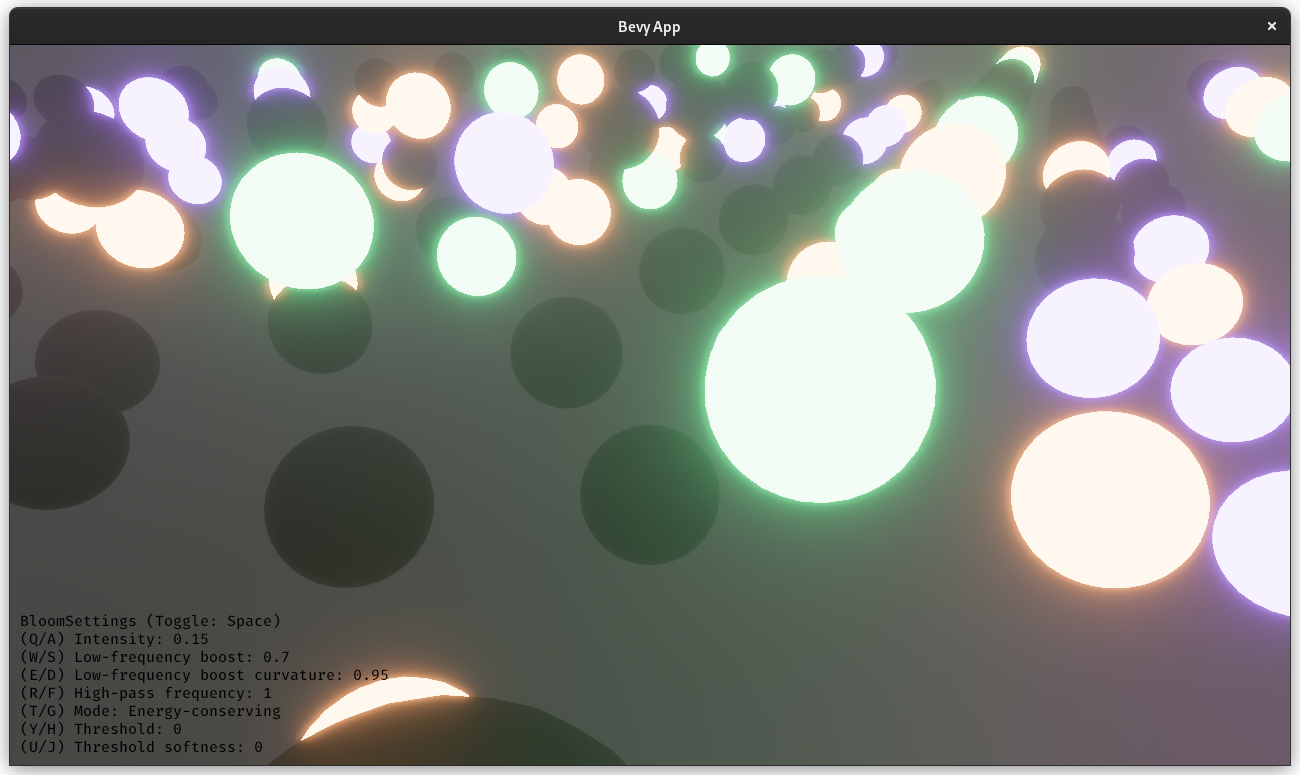
Huge credit to @StarLederer, who did almost all of the work on this. We're just reusing this PR to keep everything in one place.
# Objective
1. Make bloom more physically based.
1. Improve artistic control.
1. Allow to use bloom as screen blur.
1. Fix#6634.
1. Address #6655 (although the author makes incorrect conclusions).
## Solution
1. Set the default threshold to 0.
2. Lerp between bloom textures when `composite_mode: BloomCompositeMode::EnergyConserving`.
1. Use [a parametric function](https://starlederer.github.io/bloom) to control blend levels for each bloom texture. In the future this can be controlled per-pixel for things like lens dirt.
3. Implement BloomCompositeMode::Additive` for situations where the old school look is desired.
## Changelog
* Bloom now looks different.
* Added `BloomSettings:lf_boost`, `BloomSettings:lf_boost_curvature`, `BloomSettings::high_pass_frequency` and `BloomSettings::composite_mode`.
* `BloomSettings::scale` removed.
* `BloomSettings::knee` renamed to `BloomPrefilterSettings::softness`.
* `BloomSettings::threshold` renamed to `BloomPrefilterSettings::threshold`.
* The bloom example has been renamed to bloom_3d and improved. A bloom_2d example was added.
## Migration Guide
* Refactor mentions of `BloomSettings::knee` and `BloomSettings::threshold` as `BloomSettings::prefilter_settings` where knee is now `softness`.
* If defined without `..default()` add `..default()` to definitions of `BloomSettings` instances or manually define missing fields.
* Adapt to Bloom looking visually different (if needed).
Co-authored-by: Herman Lederer <germans.lederers@gmail.com>
# Objective
Fixes#6780
## Solution
- record the asset path of each watched file
- call `AssetIo::watch_for_changes` in `LoadContext::read_asset_bytes`
---
## Changelog
### Fixed
- fixed hot reloading for `LoadContext::read_asset_bytes`
### Changed
- `AssetIo::watch_path_for_changes` allows watched path and path to reload to differ
## Migration Guide
- for custom `AssetIo`s, differentiate paths to watch and asset paths to reload as a consequence
Co-authored-by: Vincent Junge <specificprotagonist@posteo.org>
# Objective
- Use the prepass textures in webgl
## Solution
- Bind the prepass textures even when using webgl, but only if msaa is disabled
- Also did some refactors to centralize how textures are bound, similar to the EnvironmentMapLight PR
- ~~Also did some refactors of the example to make it work in webgl~~
- ~~To make the example work in webgl, I needed to use a sampler for the depth texture, the resulting code looks a bit weird, but it's simple enough and I think it's worth it to show how it works when using webgl~~
# Objective
UIs created for Bevy cannot currently be made accessible. This PR aims to address that.
## Solution
Integrate AccessKit as a dependency, adding accessibility support to existing bevy_ui widgets.
## Changelog
### Added
* Integrate with and expose [AccessKit](https://accesskit.dev) for platform accessibility.
* Add `Label` for marking text specifically as a label for UI controls.
# Objective
- Fixes#1800, fixes#6984
- Alternative to #7196
- Ensure feature list is always up to date and that all are documented
- Help discovery of features
## Solution
- Use a template to update the cargo feature list
- Use the comment just above the feature declaration as the description
- Add the checks to CI
- Add the features to the base crate doc
# Objective
This PR adds an example that shows how to use `apply_system_buffers` and how to order it with respect to the relevant systems. It also shows how not ordering the systems can lead to unexpected behaviours.
## Solution
Add the example.
# Objective
This adds small comment to window fall through example that it won't work on specific platforms. This information is documented in `Cursor` api but I think it is worth to add it in example description for clarity sake.
# Objective
Support the following syntax for adding systems:
```rust
App::new()
.add_system(setup.on_startup())
.add_systems((
show_menu.in_schedule(OnEnter(GameState::Paused)),
menu_ssytem.in_set(OnUpdate(GameState::Paused)),
hide_menu.in_schedule(OnExit(GameState::Paused)),
))
```
## Solution
Add the traits `IntoSystemAppConfig{s}`, which provide the extension methods necessary for configuring which schedule a system belongs to. These extension methods return `IntoSystemAppConfig{s}`, which `App::add_system{s}` uses to choose which schedule to add systems to.
---
## Changelog
+ Added the extension methods `in_schedule(label)` and `on_startup()` for configuring the schedule a system belongs to.
## Future Work
* Replace all uses of `add_startup_system` in the engine.
* Deprecate this method
# Objective
Fix#7584.
## Solution
Add an abstraction for creating custom system combinators with minimal boilerplate. Use this to implement AND/OR combinators. Use this to simplify the implementation of `PipeSystem`.
## Example
Feel free to bikeshed on the syntax.
I chose the names `and_then`/`or_else` to emphasize the fact that these short-circuit, while I chose method syntax to empasize that the arguments are *not* treated equally.
```rust
app.add_systems((
my_system.run_if(resource_exists::<R>().and_then(resource_equals(R(0)))),
our_system.run_if(resource_exists::<R>().or_else(resource_exists::<S>())),
));
```
---
## Todo
- [ ] Decide on a syntax
- [x] Write docs
- [x] Write tests
## Changelog
+ Added the extension methods `.and_then(...)` and `.or_else(...)` to run conditions, which allows combining run conditions with short-circuiting behavior.
+ Added the trait `Combine`, which can be used with the new `CombinatorSystem` to create system combinators with custom behavior.
# Objective
- Add basic spatial audio support to Bevy
- this is what rodio supports, so no HRTF, just simple stereo channel manipulation
- no "built-in" ECS support: `Emitter` and `Listener` should be components that would automatically update the positions
This PR goal is to just expose rodio functionality, made possible with the recent update to rodio 0.16. A proper ECS integration opens a lot more questions, and would probably require an RFC
Also updates rodio and fixes#6122
# Objective
Splits tone mapping from https://github.com/bevyengine/bevy/pull/6677 into a separate PR.
Address https://github.com/bevyengine/bevy/issues/2264.
Adds tone mapping options:
- None: Bypasses tonemapping for instances where users want colors output to match those set.
- Reinhard
- Reinhard Luminance: Bevy's exiting tonemapping
- [ACES](https://github.com/TheRealMJP/BakingLab/blob/master/BakingLab/ACES.hlsl) (Fitted version, based on the same implementation that Godot 4 uses) see https://github.com/bevyengine/bevy/issues/2264
- [AgX](https://github.com/sobotka/AgX)
- SomewhatBoringDisplayTransform
- TonyMcMapface
- Blender Filmic
This PR also adds support for EXR images so they can be used to compare tonemapping options with reference images.
## Migration Guide
- Tonemapping is now an enum with NONE and the various tonemappers.
- The DebandDither is now a separate component.
Co-authored-by: JMS55 <47158642+JMS55@users.noreply.github.com>
# Objective
`ChangeTrackers<>` is a `WorldQuery` type that lets you access the change ticks for a component. #7097 has added `Ref<>`, which gives access to a component's value in addition to its change ticks. Since bevy's access model does not separate a component's value from its change ticks, there is no benefit to using `ChangeTrackers<T>` over `Ref<T>`.
## Solution
Deprecate `ChangeTrackers<>`.
---
## Changelog
* `ChangeTrackers<T>` has been deprecated. It will be removed in Bevy 0.11.
## Migration Guide
`ChangeTrackers<T>` has been deprecated, and will be removed in the next release. Any usage should be replaced with `Ref<T>`.
```rust
// Before (0.9)
fn my_system(q: Query<(&MyComponent, ChangeTrackers<MyComponent>)>) {
for (value, trackers) in &q {
if trackers.is_changed() {
// Do something with `value`.
}
}
}
// After (0.10)
fn my_system(q: Query<Ref<MyComponent>>) {
for value in &q {
if value.is_changed() {
// Do something with `value`.
}
}
}
```
# Objective
Fixes#7735
## Solution
Use `spawn_batch` instead of `spawn` repeatedly in a for loop
I have decided to switch from using rands `thread_rng()` to its `StdRng`, this allows us to avoid calling `collect()` on the bundle iterator, if collecting is fine then I can revert it back to using `thread_rng()`.
# Objective
Fix#7440. Fix#7441.
## Solution
* Remove builder functions on `ScheduleBuildSettings` in favor of public fields, move docs to the fields.
* Add `use_shortnames` and use it in `get_node_name` to feed it through `bevy_utils::get_short_name`.
# Objective
Allow for creating pipelines that use push constants. To be able to use push constants. Fixes#4825
As of right now, trying to call `RenderPass::set_push_constants` will trigger the following error:
```
thread 'main' panicked at 'wgpu error: Validation Error
Caused by:
In a RenderPass
note: encoder = `<CommandBuffer-(0, 59, Vulkan)>`
In a set_push_constant command
provided push constant is for stage(s) VERTEX | FRAGMENT | VERTEX_FRAGMENT, however the pipeline layout has no push constant range for the stage(s) VERTEX | FRAGMENT | VERTEX_FRAGMENT
```
## Solution
Add a field push_constant_ranges to` RenderPipelineDescriptor` and `ComputePipelineDescriptor`.
This PR supersedes #4908 which now contains merge conflicts due to significant changes to `bevy_render`.
Meanwhile, this PR also made the `layout` field of `RenderPipelineDescriptor` and `ComputePipelineDescriptor` non-optional. If the user do not need to specify the bind group layouts, they can simply supply an empty vector here. No need for it to be optional.
---
## Changelog
- Add a field push_constant_ranges to RenderPipelineDescriptor and ComputePipelineDescriptor
- Made the `layout` field of RenderPipelineDescriptor and ComputePipelineDescriptor non-optional.
## Migration Guide
- Add push_constant_ranges: Vec::new() to every `RenderPipelineDescriptor` and `ComputePipelineDescriptor`
- Unwrap the optional values on the `layout` field of `RenderPipelineDescriptor` and `ComputePipelineDescriptor`. If the descriptor has no layout, supply an empty vector.
Co-authored-by: Zhixing Zhang <me@neoto.xin>
# Objective
Fixes#7295
Should we maybe default to 4x if 2x/8x is selected but not supported?
---
## Changelog
- Added 2x and 8x sample counts for MSAA.
# Objective
- Environment maps use these formats, and in the future rendering LUTs will need textures loaded by default in the engine
## Solution
- Make ktx2 and zstd part of the default feature
- Let examples assume these features are enabled
---
## Changelog
- `ktx2` and `zstd` are now party of bevy's default enabled features
## Migration Guide
- If you used the `ktx2` or `zstd` features, you no longer need to explicitly enable them, as they are now part of bevy's default enabled features
# Objective
Fixes#7632.
As discussed in #7634, it can be quite challenging for users to intuit the mental model of how states now work.
## Solution
Rather than change the behavior of the `OnUpdate` system set, instead work on making sure it's easy to understand what's going on.
Two things have been done:
1. Remove the `.on_update` method from our bevy of system building traits. This was special-cased and made states feel much more magical than they need to.
2. Improve the docs for the `OnUpdate` system set.
# Objective
- Required features were added to some examples in #7051 even though those features aren't the main focus of the examples
- Don't require features on examples that are useful without them
## Solution
- Remove required features on examples `load_gltf` and `scene_viewer`, but log a warning when they are not enabled
# Objective
There was issue #191 requesting subdivisions on the shape::Plane.
I also could have used this recently. I then write the solution.
Fixes #191
## Solution
I changed the shape::Plane to include subdivisions field and the code to create the subdivisions. I don't know how people are counting subdivisions so as I put in the doc comments 0 subdivisions results in the original geometry of the Plane.
Greater then 0 results in the number of lines dividing the plane.
I didn't know if it would be better to create a new struct that implemented this feature, say SubdivisionPlane or change Plane. I decided on changing Plane as that was what the original issue was.
It would be trivial to alter this to use another struct instead of altering Plane.
The issues of migration, although small, would be eliminated if a new struct was implemented.
## Changelog
### Added
Added subdivisions field to shape::Plane
## Migration Guide
All the examples needed to be updated to initalize the subdivisions field.
Also there were two tests in tests/window that need to be updated.
A user would have to update all their uses of shape::Plane to initalize the subdivisions field.
# Objective
`Size::width` sets the `height` field to `Val::DEFAULT` which is `Val::Undefined`, but the default for `Size` `height` is `Val::Auto`.
`Size::height` has the same problem, but with the `width` field.
The UI examples specify numeric values in many places where they could either be elided or replaced by composition of the Flex enum properties.
related: https://github.com/bevyengine/bevy/pull/7468
fixes: https://github.com/bevyengine/bevy/issues/6498
## Solution
Change `Size::width` so it sets `height` to `Val::AUTO` and change `Size::height` so it sets `width` to `Val::AUTO`.
Added some tests so this doesn't happen again.
## Changelog
Changed `Size::width` so it sets the `height` to `Val::AUTO`.
Changed `Size::height` so it sets the `width` to `Val::AUTO`.
Added tests to `geometry.rs` for `Size` and `UiRect` to ensure correct behaviour.
Simplified the UI examples. Replaced numeric values with the Flex property enums or elided them where possible, and removed the remaining use of auto margins.
## Migration Guide
The `Size::width` constructor function now sets the `height` to `Val::Auto` instead of `Val::Undefined`.
The `Size::height` constructor function now sets the `width` to `Val::Auto` instead of `Val::Undefined`.
(Before)
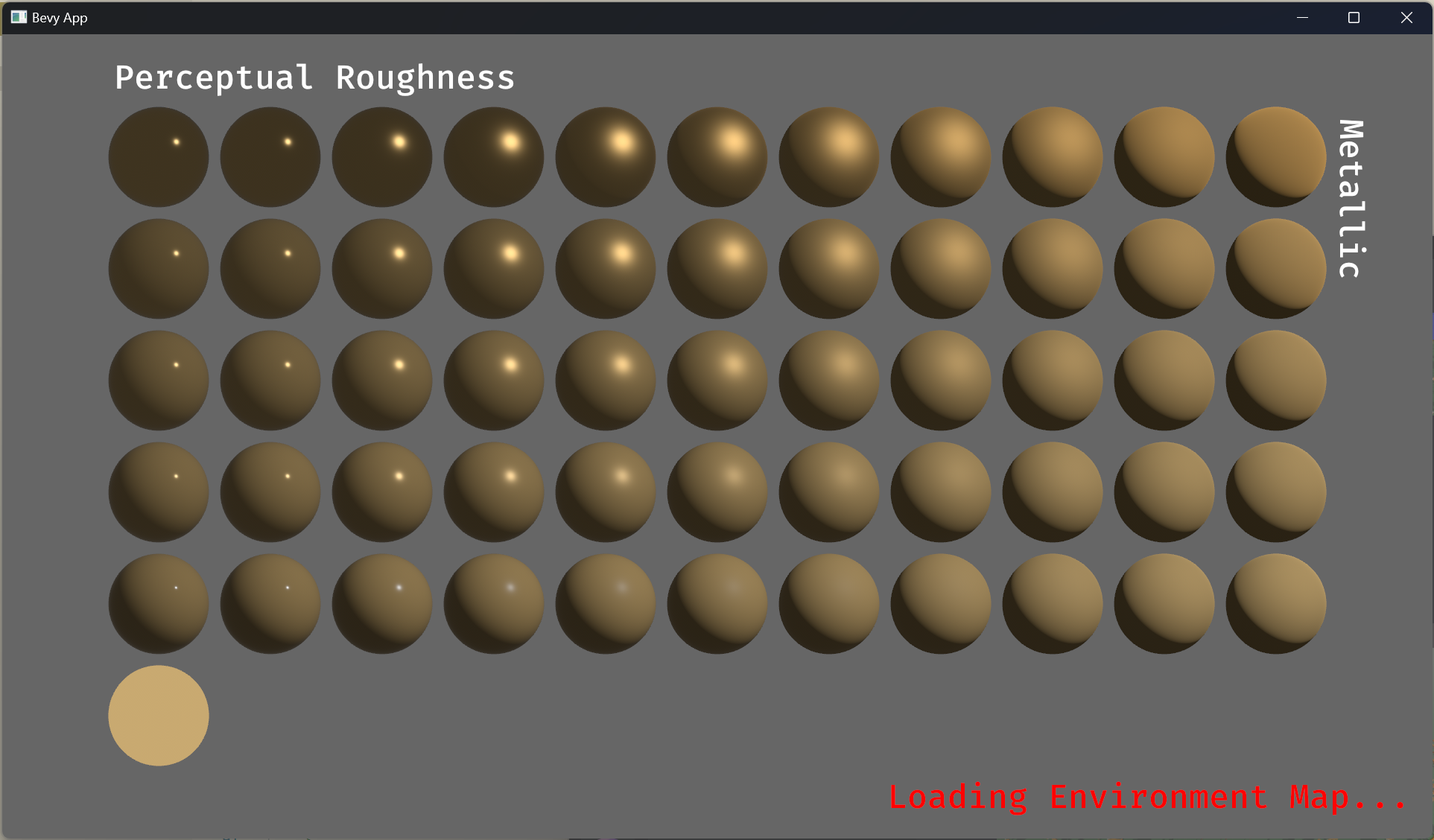
(After)
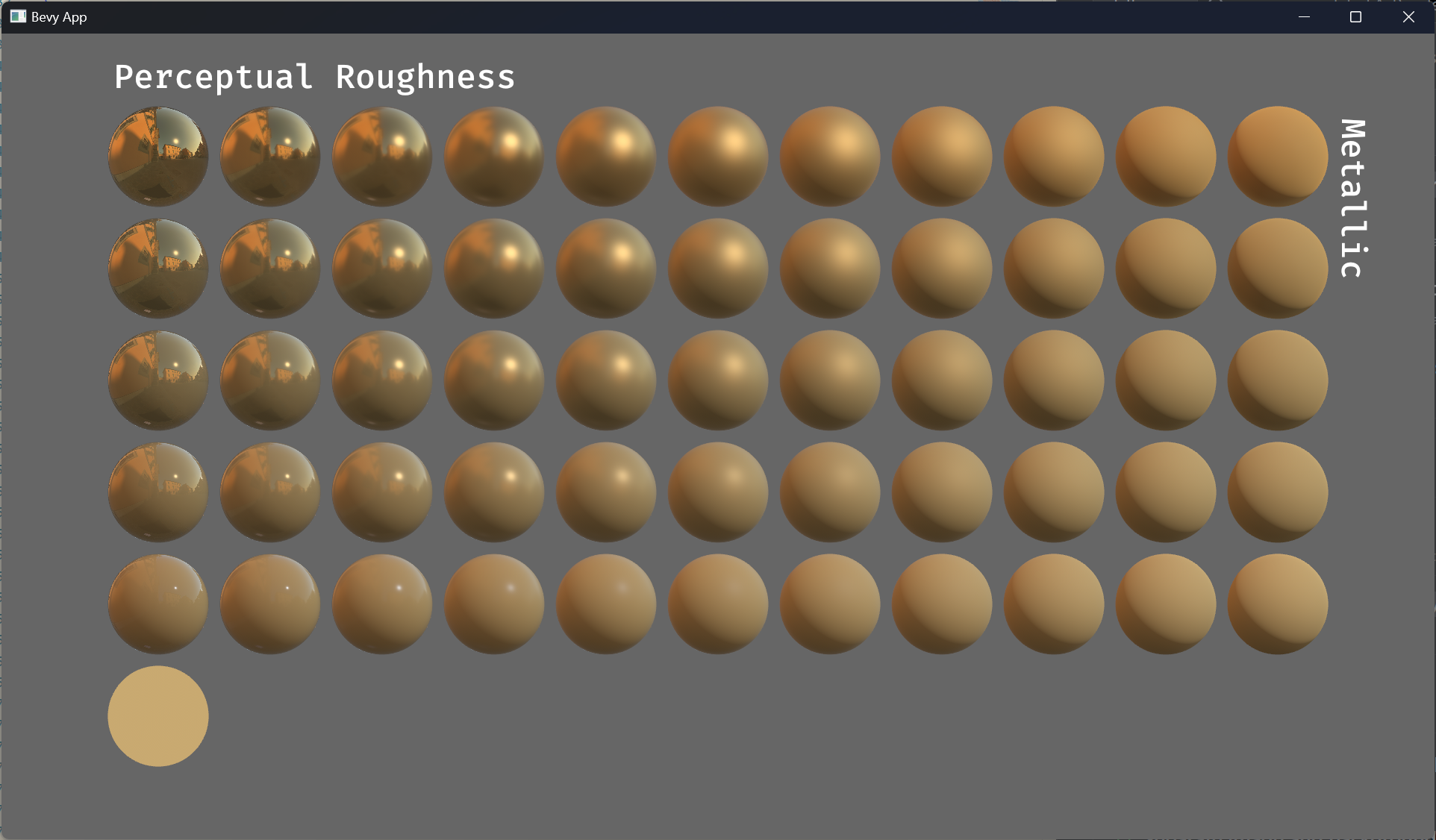
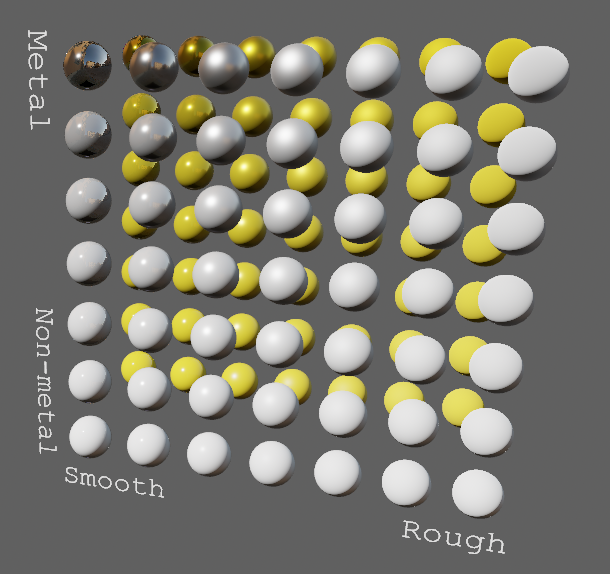
# Objective
- Improve lighting; especially reflections.
- Closes https://github.com/bevyengine/bevy/issues/4581.
## Solution
- Implement environment maps, providing better ambient light.
- Add microfacet multibounce approximation for specular highlights from Filament.
- Occlusion is no longer incorrectly applied to direct lighting. It now only applies to diffuse indirect light. Unsure if it's also supposed to apply to specular indirect light - the glTF specification just says "indirect light". In the case of ambient occlusion, for instance, that's usually only calculated as diffuse though. For now, I'm choosing to apply this just to indirect diffuse light, and not specular.
- Modified the PBR example to use an environment map, and have labels.
- Added `FallbackImageCubemap`.
## Implementation
- IBL technique references can be found in environment_map.wgsl.
- It's more accurate to use a LUT for the scale/bias. Filament has a good reference on generating this LUT. For now, I just used an analytic approximation.
- For now, environment maps must first be prefiltered outside of bevy using a 3rd party tool. See the `EnvironmentMap` documentation.
- Eventually, we should have our own prefiltering code, so that we can have dynamically changing environment maps, as well as let users drop in an HDR image and use asset preprocessing to create the needed textures using only bevy.
---
## Changelog
- Added an `EnvironmentMapLight` camera component that adds additional ambient light to a scene.
- StandardMaterials will now appear brighter and more saturated at high roughness, due to internal material changes. This is more physically correct.
- Fixed StandardMaterial occlusion being incorrectly applied to direct lighting.
- Added `FallbackImageCubemap`.
Co-authored-by: IceSentry <c.giguere42@gmail.com>
Co-authored-by: James Liu <contact@jamessliu.com>
Co-authored-by: Rob Parrett <robparrett@gmail.com>
# Objective
Fixes#7565
`ecs_guide` example is currently panicking. This seems to just be a problem with the example only caused by the base sets PR.
## Solution
First, changed a few `in_set` to `in_base_set` to fix a few of
```
thread 'main' panicked at 'Systems cannot be added to 'base' system sets using 'in_set'. Use 'in_base_set' instead.', examples/ecs/ecs_guide.rs:301:45
```
And then added an `in_base_set` to fix the resulting (confusing) cycle error
```
2023-02-06T13:54:29.213843Z ERROR bevy_ecs::schedule_v3::schedule: schedule contains at least 1 cycle(s) -- cycle(s) found within:
---- 0: ["ecs_guide::game_over_system", "ecs_guide::score_check_system"]
```
I also changed this `add_system` call so the comment above and below make sense:
```diff
// add_system(system) adds systems to the Update system set by default
// However we can manually specify the set if we want to. The following is equivalent to
// add_system(score_system)
- .add_system(score_system)
+ .add_system(score_system.in_base_set(CoreSet::Update))
// There are other `CoreSets`, such as `Last` which runs at the very end of each run.
```
## Notes
- Does `MySet` even need to be a base set? Seems like yes.
- Is that cycle error when there is no explicit `in_base_set` actually expected?
# Objective
Implementing `States` manually is repetitive, so let's not.
One thing I'm unsure of is whether the macro import statement is in the right place.
# Objective
- Merge the examples on iOS and Android
- Make sure they both work from the same code
## Solution
- don't create window when not in an active state (from #6830)
- exit on suspend on Android (from #6830)
- automatically enable dependency feature of bevy_audio on android so that it works out of the box
- don't inverse y position of touch events
- reuse the same example for both Android and iOS
Fixes#4616Fixes#4103Fixes#3648Fixes#3458Fixes#3249Fixes#86
# Objective
NOTE: This depends on #7267 and should not be merged until #7267 is merged. If you are reviewing this before that is merged, I highly recommend viewing the Base Sets commit instead of trying to find my changes amongst those from #7267.
"Default sets" as described by the [Stageless RFC](https://github.com/bevyengine/rfcs/pull/45) have some [unfortunate consequences](https://github.com/bevyengine/bevy/discussions/7365).
## Solution
This adds "base sets" as a variant of `SystemSet`:
A set is a "base set" if `SystemSet::is_base` returns `true`. Typically this will be opted-in to using the `SystemSet` derive:
```rust
#[derive(SystemSet, Clone, Hash, Debug, PartialEq, Eq)]
#[system_set(base)]
enum MyBaseSet {
A,
B,
}
```
**Base sets are exclusive**: a system can belong to at most one "base set". Adding a system to more than one will result in an error. When possible we fail immediately during system-config-time with a nice file + line number. For the more nested graph-ey cases, this will fail at the final schedule build.
**Base sets cannot belong to other sets**: this is where the word "base" comes from
Systems and Sets can only be added to base sets using `in_base_set`. Calling `in_set` with a base set will fail. As will calling `in_base_set` with a normal set.
```rust
app.add_system(foo.in_base_set(MyBaseSet::A))
// X must be a normal set ... base sets cannot be added to base sets
.configure_set(X.in_base_set(MyBaseSet::A))
```
Base sets can still be configured like normal sets:
```rust
app.add_system(MyBaseSet::B.after(MyBaseSet::Ap))
```
The primary use case for base sets is enabling a "default base set":
```rust
schedule.set_default_base_set(CoreSet::Update)
// this will belong to CoreSet::Update by default
.add_system(foo)
// this will override the default base set with PostUpdate
.add_system(bar.in_base_set(CoreSet::PostUpdate))
```
This allows us to build apis that work by default in the standard Bevy style. This is a rough analog to the "default stage" model, but it use the new "stageless sets" model instead, with all of the ordering flexibility (including exclusive systems) that it provides.
---
## Changelog
- Added "base sets" and ported CoreSet to use them.
## Migration Guide
TODO
Huge thanks to @maniwani, @devil-ira, @hymm, @cart, @superdump and @jakobhellermann for the help with this PR.
# Objective
- Followup #6587.
- Minimal integration for the Stageless Scheduling RFC: https://github.com/bevyengine/rfcs/pull/45
## Solution
- [x] Remove old scheduling module
- [x] Migrate new methods to no longer use extension methods
- [x] Fix compiler errors
- [x] Fix benchmarks
- [x] Fix examples
- [x] Fix docs
- [x] Fix tests
## Changelog
### Added
- a large number of methods on `App` to work with schedules ergonomically
- the `CoreSchedule` enum
- `App::add_extract_system` via the `RenderingAppExtension` trait extension method
- the private `prepare_view_uniforms` system now has a public system set for scheduling purposes, called `ViewSet::PrepareUniforms`
### Removed
- stages, and all code that mentions stages
- states have been dramatically simplified, and no longer use a stack
- `RunCriteriaLabel`
- `AsSystemLabel` trait
- `on_hierarchy_reports_enabled` run criteria (now just uses an ad hoc resource checking run condition)
- systems in `RenderSet/Stage::Extract` no longer warn when they do not read data from the main world
- `RunCriteriaLabel`
- `transform_propagate_system_set`: this was a nonstandard pattern that didn't actually provide enough control. The systems are already `pub`: the docs have been updated to ensure that the third-party usage is clear.
### Changed
- `System::default_labels` is now `System::default_system_sets`.
- `App::add_default_labels` is now `App::add_default_sets`
- `CoreStage` and `StartupStage` enums are now `CoreSet` and `StartupSet`
- `App::add_system_set` was renamed to `App::add_systems`
- The `StartupSchedule` label is now defined as part of the `CoreSchedules` enum
- `.label(SystemLabel)` is now referred to as `.in_set(SystemSet)`
- `SystemLabel` trait was replaced by `SystemSet`
- `SystemTypeIdLabel<T>` was replaced by `SystemSetType<T>`
- The `ReportHierarchyIssue` resource now has a public constructor (`new`), and implements `PartialEq`
- Fixed time steps now use a schedule (`CoreSchedule::FixedTimeStep`) rather than a run criteria.
- Adding rendering extraction systems now panics rather than silently failing if no subapp with the `RenderApp` label is found.
- the `calculate_bounds` system, with the `CalculateBounds` label, is now in `CoreSet::Update`, rather than in `CoreSet::PostUpdate` before commands are applied.
- `SceneSpawnerSystem` now runs under `CoreSet::Update`, rather than `CoreStage::PreUpdate.at_end()`.
- `bevy_pbr::add_clusters` is no longer an exclusive system
- the top level `bevy_ecs::schedule` module was replaced with `bevy_ecs::scheduling`
- `tick_global_task_pools_on_main_thread` is no longer run as an exclusive system. Instead, it has been replaced by `tick_global_task_pools`, which uses a `NonSend` resource to force running on the main thread.
## Migration Guide
- Calls to `.label(MyLabel)` should be replaced with `.in_set(MySet)`
- Stages have been removed. Replace these with system sets, and then add command flushes using the `apply_system_buffers` exclusive system where needed.
- The `CoreStage`, `StartupStage, `RenderStage` and `AssetStage` enums have been replaced with `CoreSet`, `StartupSet, `RenderSet` and `AssetSet`. The same scheduling guarantees have been preserved.
- Systems are no longer added to `CoreSet::Update` by default. Add systems manually if this behavior is needed, although you should consider adding your game logic systems to `CoreSchedule::FixedTimestep` instead for more reliable framerate-independent behavior.
- Similarly, startup systems are no longer part of `StartupSet::Startup` by default. In most cases, this won't matter to you.
- For example, `add_system_to_stage(CoreStage::PostUpdate, my_system)` should be replaced with
- `add_system(my_system.in_set(CoreSet::PostUpdate)`
- When testing systems or otherwise running them in a headless fashion, simply construct and run a schedule using `Schedule::new()` and `World::run_schedule` rather than constructing stages
- Run criteria have been renamed to run conditions. These can now be combined with each other and with states.
- Looping run criteria and state stacks have been removed. Use an exclusive system that runs a schedule if you need this level of control over system control flow.
- For app-level control flow over which schedules get run when (such as for rollback networking), create your own schedule and insert it under the `CoreSchedule::Outer` label.
- Fixed timesteps are now evaluated in a schedule, rather than controlled via run criteria. The `run_fixed_timestep` system runs this schedule between `CoreSet::First` and `CoreSet::PreUpdate` by default.
- Command flush points introduced by `AssetStage` have been removed. If you were relying on these, add them back manually.
- Adding extract systems is now typically done directly on the main app. Make sure the `RenderingAppExtension` trait is in scope, then call `app.add_extract_system(my_system)`.
- the `calculate_bounds` system, with the `CalculateBounds` label, is now in `CoreSet::Update`, rather than in `CoreSet::PostUpdate` before commands are applied. You may need to order your movement systems to occur before this system in order to avoid system order ambiguities in culling behavior.
- the `RenderLabel` `AppLabel` was renamed to `RenderApp` for clarity
- `App::add_state` now takes 0 arguments: the starting state is set based on the `Default` impl.
- Instead of creating `SystemSet` containers for systems that run in stages, simply use `.on_enter::<State::Variant>()` or its `on_exit` or `on_update` siblings.
- `SystemLabel` derives should be replaced with `SystemSet`. You will also need to add the `Debug`, `PartialEq`, `Eq`, and `Hash` traits to satisfy the new trait bounds.
- `with_run_criteria` has been renamed to `run_if`. Run criteria have been renamed to run conditions for clarity, and should now simply return a bool.
- States have been dramatically simplified: there is no longer a "state stack". To queue a transition to the next state, call `NextState::set`
## TODO
- [x] remove dead methods on App and World
- [x] add `App::add_system_to_schedule` and `App::add_systems_to_schedule`
- [x] avoid adding the default system set at inappropriate times
- [x] remove any accidental cycles in the default plugins schedule
- [x] migrate benchmarks
- [x] expose explicit labels for the built-in command flush points
- [x] migrate engine code
- [x] remove all mentions of stages from the docs
- [x] verify docs for States
- [x] fix uses of exclusive systems that use .end / .at_start / .before_commands
- [x] migrate RenderStage and AssetStage
- [x] migrate examples
- [x] ensure that transform propagation is exported in a sufficiently public way (the systems are already pub)
- [x] ensure that on_enter schedules are run at least once before the main app
- [x] re-enable opt-in to execution order ambiguities
- [x] revert change to `update_bounds` to ensure it runs in `PostUpdate`
- [x] test all examples
- [x] unbreak directional lights
- [x] unbreak shadows (see 3d_scene, 3d_shape, lighting, transparaency_3d examples)
- [x] game menu example shows loading screen and menu simultaneously
- [x] display settings menu is a blank screen
- [x] `without_winit` example panics
- [x] ensure all tests pass
- [x] SubApp doc test fails
- [x] runs_spawn_local tasks fails
- [x] [Fix panic_when_hierachy_cycle test hanging](https://github.com/alice-i-cecile/bevy/pull/120)
## Points of Difficulty and Controversy
**Reviewers, please give feedback on these and look closely**
1. Default sets, from the RFC, have been removed. These added a tremendous amount of implicit complexity and result in hard to debug scheduling errors. They're going to be tackled in the form of "base sets" by @cart in a followup.
2. The outer schedule controls which schedule is run when `App::update` is called.
3. I implemented `Label for `Box<dyn Label>` for our label types. This enables us to store schedule labels in concrete form, and then later run them. I ran into the same set of problems when working with one-shot systems. We've previously investigated this pattern in depth, and it does not appear to lead to extra indirection with nested boxes.
4. `SubApp::update` simply runs the default schedule once. This sucks, but this whole API is incomplete and this was the minimal changeset.
5. `time_system` and `tick_global_task_pools_on_main_thread` no longer use exclusive systems to attempt to force scheduling order
6. Implemetnation strategy for fixed timesteps
7. `AssetStage` was migrated to `AssetSet` without reintroducing command flush points. These did not appear to be used, and it's nice to remove these bottlenecks.
8. Migration of `bevy_render/lib.rs` and pipelined rendering. The logic here is unusually tricky, as we have complex scheduling requirements.
## Future Work (ideally before 0.10)
- Rename schedule_v3 module to schedule or scheduling
- Add a derive macro to states, and likely a `EnumIter` trait of some form
- Figure out what exactly to do with the "systems added should basically work by default" problem
- Improve ergonomics for working with fixed timesteps and states
- Polish FixedTime API to match Time
- Rebase and merge #7415
- Resolve all internal ambiguities (blocked on better tools, especially #7442)
- Add "base sets" to replace the removed default sets.
# Objective
- Improve ergonomics / documentation of cascaded shadow maps
- Allow for the customization of the nearest shadowing distance.
- Fixes#7393
- Fixes#7362
## Solution
- Introduce `CascadeShadowConfigBuilder`
- Tweak various example cascade settings for better quality.
---
## Changelog
- Made examples look nicer under cascaded shadow maps.
- Introduce `CascadeShadowConfigBuilder` to help with creating `CascadeShadowConfig`
## Migration Guide
- Configure settings for cascaded shadow maps for directional lights using the newly introduced `CascadeShadowConfigBuilder`.
Co-authored-by: Robert Swain <robert.swain@gmail.com>
# Objective
Removal events are unwieldy and require some knowledge of when to put systems that need to catch events for them, it is very easy to end up missing one and end up with memory leak-ish issues where you don't clean up after yourself.
## Solution
Consolidate removals with the benefits of `Events<...>` (such as double buffering and per system ticks for reading the events) and reduce the special casing of it, ideally I was hoping to move the removals to a `Resource` in the world, but that seems a bit more rough to implement/maintain because of double mutable borrowing issues.
This doesn't go the full length of change detection esque removal detection a la https://github.com/bevyengine/rfcs/pull/44.
Just tries to make the current workflow a bit more user friendly so detecting removals isn't such a scheduling nightmare.
---
## Changelog
- RemovedComponents<T> is now backed by an `Events<Entity>` for the benefits of double buffering.
## Migration Guide
- Add a `mut` for `removed: RemovedComponents<T>` since we are now modifying an event reader internally.
- Iterating over removed components now requires `&mut removed_components` or `removed_components.iter()` instead of `&removed_components`.
# Objective
- Update winit to 0.28
## Solution
- Small API change
- A security advisory has been added for a unmaintained crate used by a dependency of winit build script for wayland
I didn't do anything for Android support in this PR though it should be fixable, it should be done in a separate one, maybe https://github.com/bevyengine/bevy/pull/6830
---
## Changelog
- `window.always_on_top` has been removed, you can now use `window.window_level`
## Migration Guide
before:
```rust
app.new()
.add_plugins(DefaultPlugins.set(WindowPlugin {
primary_window: Some(Window {
always_on_top: true,
..default()
}),
..default()
}));
```
after:
```rust
app.new()
.add_plugins(DefaultPlugins.set(WindowPlugin {
primary_window: Some(Window {
window_level: bevy:🪟:WindowLevel::AlwaysOnTop,
..default()
}),
..default()
}));
```
## Objective
A common easy to miss mistake is to write something like:
``` rust
Size::new(Val::Percent(100.), Val::Px(100.));
```
`UiRect` has the `left`, `right`, `all`, `vertical`, etc constructor functions, `Size` is used a lot more frequently but lacks anything similar.
## Solution
Implement `all`, `width` and `height` functions for `Size`.
## Changelog
* Added `all`, `width` and `height` functions to `Size`.
Since the new renderer, no frustum culling is applied to 2d components
(be it Sprite or Mesh2d), the stress_tests docs is therefore misleading
and should be updated.
Furthermore, the `many_animated_sprites` example, unlike `many_sprites`
kept vsync enabled, making the stress test less useful than it could be.
We now disable vsync for `many_animated_sprites`.
Also, `many_animated_sprites` didn't have the stress_tests warning
message, instead, it had a paragraph in the module doc. I replaced the
module doc paragraph by the warning message, to be more in line with
other examples.
## Solution
- Remove the paragraph about frustum culling in the `many_sprites`
and `many_animated_sprites` stress tests
# Objective
- Bevy should not have any "internal" execution order ambiguities. These clutter the output of user-facing error reporting, and can result in nasty, nondetermistic, very difficult to solve bugs.
- Verifying this currently involves repeated non-trivial manual work.
## Solution
- [x] add an example to quickly check this
- ~~[ ] ensure that this example panics if there are any unresolved ambiguities~~
- ~~[ ] run the example in CI 😈~~
There's one tricky ambiguity left, between UI and animation. I don't have the tools to fix this without system set configuration, so the remaining work is going to be left to #7267 or another PR after that.
```
2023-01-27T18:38:42.989405Z INFO bevy_ecs::schedule::ambiguity_detection: Execution order ambiguities detected, you might want to add an explicit dependency relation between some of these systems:
* Parallel systems:
-- "bevy_animation::animation_player" and "bevy_ui::flex::flex_node_system"
conflicts: ["bevy_transform::components::transform::Transform"]
```
## Changelog
Resolved internal execution order ambiguities for:
1. Transform propagation (ignored, we need smarter filter checking).
2. Gamepad processing (fixed).
3. bevy_winit's window handling (fixed).
4. Cascaded shadow maps and perspectives (fixed).
Also fixed a desynchronized state bug that could occur when the `Window` component is removed and then added to the same entity in a single frame.
# Objective
Update Bevy to wgpu 0.15.
## Changelog
- Update to wgpu 0.15, wgpu-hal 0.15.1, and naga 0.11
- Users can now use the [DirectX Shader Compiler](https://github.com/microsoft/DirectXShaderCompiler) (DXC) on Windows with DX12 for faster shader compilation and ShaderModel 6.0+ support (requires `dxcompiler.dll` and `dxil.dll`, which are included in DXC downloads from [here](https://github.com/microsoft/DirectXShaderCompiler/releases/latest))
## Migration Guide
### WGSL Top-Level `let` is now `const`
All top level constants are now declared with `const`, catching up with the wgsl spec.
`let` is no longer allowed at the global scope, only within functions.
```diff
-let SOME_CONSTANT = 12.0;
+const SOME_CONSTANT = 12.0;
```
#### `TextureDescriptor` and `SurfaceConfiguration` now requires a `view_formats` field
The new `view_formats` field in the `TextureDescriptor` is used to specify a list of formats the texture can be re-interpreted to in a texture view. Currently only changing srgb-ness is allowed (ex. `Rgba8Unorm` <=> `Rgba8UnormSrgb`). You should set `view_formats` to `&[]` (empty) unless you have a specific reason not to.
#### The DirectX Shader Compiler (DXC) is now supported on DX12
DXC is now the default shader compiler when using the DX12 backend. DXC is Microsoft's replacement for their legacy FXC compiler, and is faster, less buggy, and allows for modern shader features to be used (ShaderModel 6.0+). DXC requires `dxcompiler.dll` and `dxil.dll` to be available, otherwise it will log a warning and fall back to FXC.
You can get `dxcompiler.dll` and `dxil.dll` by downloading the latest release from [Microsoft's DirectXShaderCompiler github repo](https://github.com/microsoft/DirectXShaderCompiler/releases/latest) and copying them into your project's root directory. These must be included when you distribute your Bevy game/app/etc if you plan on supporting the DX12 backend and are using DXC.
`WgpuSettings` now has a `dx12_shader_compiler` field which can be used to choose between either FXC or DXC (if you pass None for the paths for DXC, it will check for the .dlls in the working directory).
# Objective
- Fix#7315
- Add IME support
## Solution
- Add two new fields to `Window`, to control if IME is enabled and the candidate box position
This allows the use of dead keys which are needed in French, or the full IME experience to type using Pinyin
I also added a basic general text input example that can handle IME input.
https://user-images.githubusercontent.com/8672791/213941353-5ed73a73-5dd1-4e66-a7d6-a69b49694c52.mp4
<img width="1392" alt="image" src="https://user-images.githubusercontent.com/418473/203873533-44c029af-13b7-4740-8ea3-af96bd5867c9.png">
<img width="1392" alt="image" src="https://user-images.githubusercontent.com/418473/203873549-36be7a23-b341-42a2-8a9f-ceea8ac7a2b8.png">
# Objective
- Add support for the “classic” distance fog effect, as well as a more advanced atmospheric fog effect.
## Solution
This PR:
- Introduces a new `FogSettings` component that controls distance fog per-camera.
- Adds support for three widely used “traditional” fog falloff modes: `Linear`, `Exponential` and `ExponentialSquared`, as well as a more advanced `Atmospheric` fog;
- Adds support for directional light influence over fog color;
- Extracts fog via `ExtractComponent`, then uses a prepare system that sets up a new dynamic uniform struct (`Fog`), similar to other mesh view types;
- Renders fog in PBR material shader, as a final adjustment to the `output_color`, after PBR is computed (but before tone mapping);
- Adds a new `StandardMaterial` flag to enable fog; (`fog_enabled`)
- Adds convenience methods for easier artistic control when creating non-linear fog types;
- Adds documentation around fog.
---
## Changelog
### Added
- Added support for distance-based fog effects for PBR materials, controllable per-camera via the new `FogSettings` component;
- Added `FogFalloff` enum for selecting between three widely used “traditional” fog falloff modes: `Linear`, `Exponential` and `ExponentialSquared`, as well as a more advanced `Atmospheric` fog;
# Objective
I found several words in code and docs are incorrect. This should be fixed.
## Solution
- Fix several minor typos
Co-authored-by: Chris Ohk <utilforever@gmail.com>
# Objective
Prevent things from breaking tomorrow when rust 1.67 is released.
## Solution
Fix a few `uninlined_format_args` lints in recently introduced code.
# Objective
Fixes#6952
## Solution
- Request WGPU capabilities `SAMPLED_TEXTURE_AND_STORAGE_BUFFER_ARRAY_NON_UNIFORM_INDEXING`, `SAMPLER_NON_UNIFORM_INDEXING` and `UNIFORM_BUFFER_AND_STORAGE_TEXTURE_ARRAY_NON_UNIFORM_INDEXING` when corresponding features are enabled.
- Add an example (`shaders/texture_binding_array`) illustrating (and testing) the use of non-uniform indexed textures and samplers.
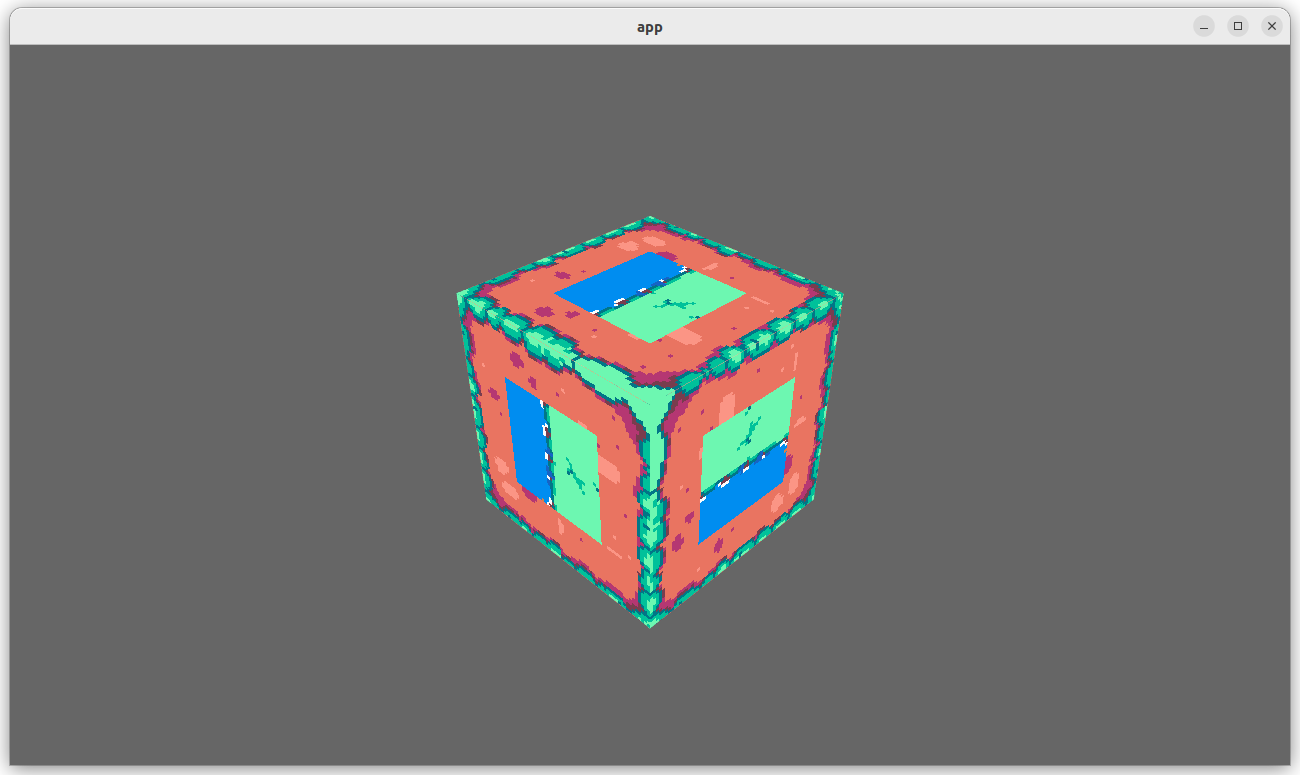
## Changelog
- Added new capabilities for shader validation.
- Added example `shaders/texture_binding_array`.
Co-authored-by: Robert Swain <robert.swain@gmail.com>
# Objective
Implements cascaded shadow maps for directional lights, which produces better quality shadows without needing excessively large shadow maps.
Fixes#3629
Before
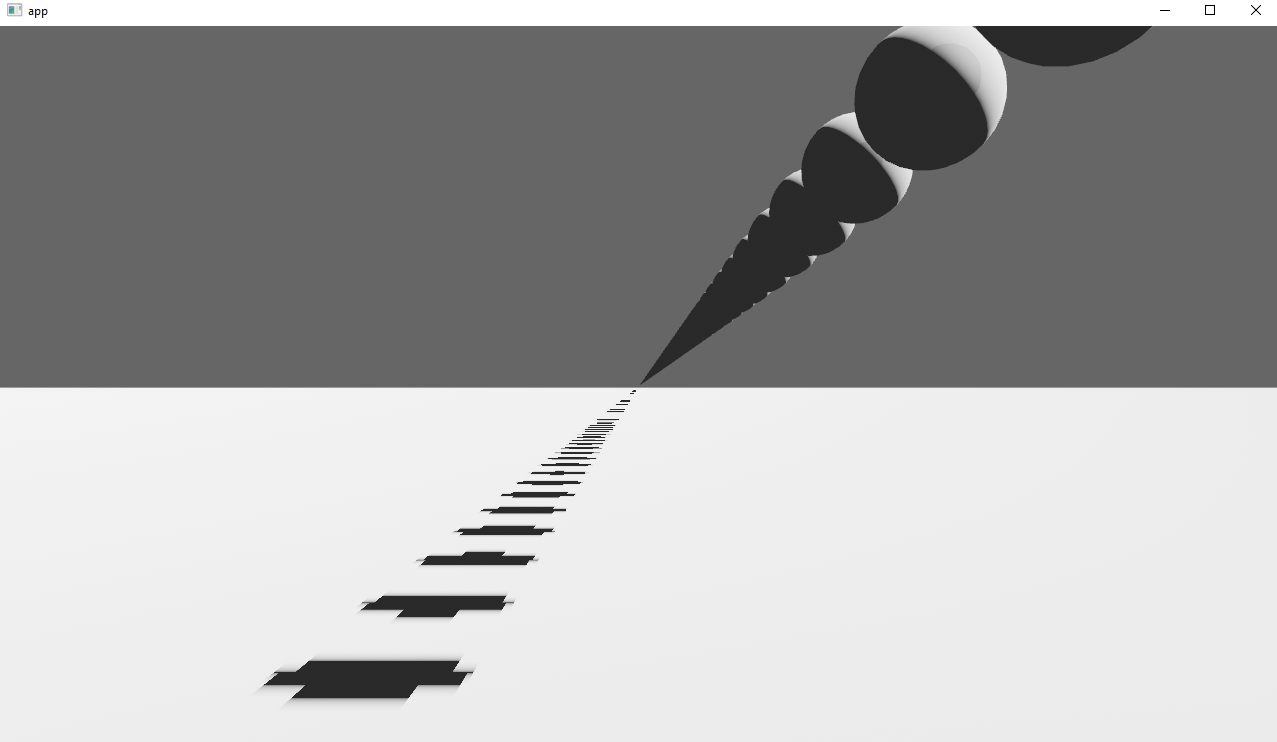
After
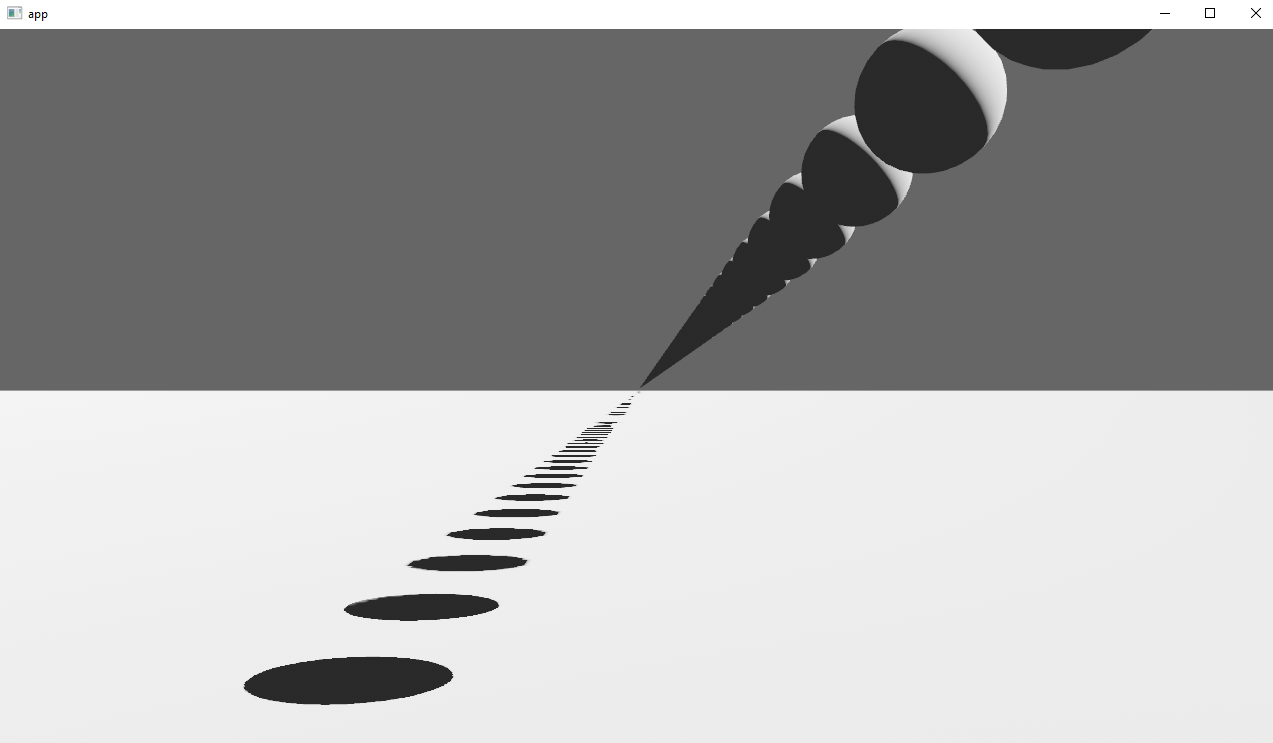
## Solution
Rather than rendering a single shadow map for directional light, the view frustum is divided into a series of cascades, each of which gets its own shadow map. The correct cascade is then sampled for shadow determination.
---
## Changelog
Directional lights now use cascaded shadow maps for improved shadow quality.
## Migration Guide
You no longer have to manually specify a `shadow_projection` for a directional light, and these settings should be removed. If customization of how cascaded shadow maps work is desired, modify the `CascadeShadowConfig` component instead.